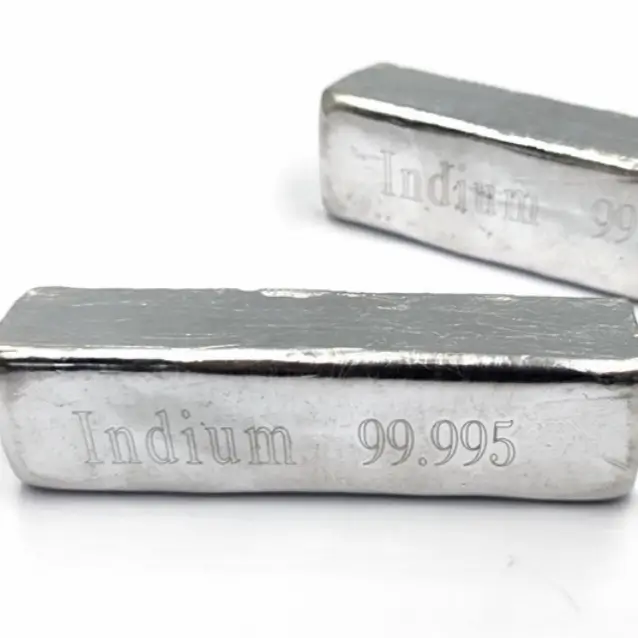Fancymetal offers high purity (customizable) metal products, as well as oxides, product shapes, foils, plates, wires, tubes, rods, powders and a variety of custom shapes.
We also have other Indium products:
Indium
Indium Metal
Indium Foil
Indium Wire
Indium Oxide
Indium Sputtering Target
indium tin oxide
ito indium tin oxide
Indium price
indium for sale
indium metal price
indium metal for sale
Indium is a rare metal and a scarce resource. The estimated global indium reserves are only 50,000 tons, of which 50% are mineable. Since no independent
Indium mines have been found, the industry produces metallic indium by purifying waste zinc and waste tin, with a recovery rate of about 50-60%.
Applications:
✔ Mainly used for the production of ITO targets (used in the production of liquid crystal displays and flat screens)
✔ Electronic semiconductor field
✔ Solder and alloy field
✔ Research industry
✔ Vacuum gap filling materials at higher temperatures
Manufacturing method:
The extraction process of indium is mainly based on extraction-electrolysis, which is also the mainstream process technology for indium production in the
world today. The principle process is: indium-containing raw materials → enrichment → chemical dissolution → purification → extraction → stripping → zinc (aluminum)
replacement → sponge indium → electrolytic refining → refined indium
Advantages:
✔Strict quality control of raw materials and processes
✔Fast delivery: 1-3 days after order confirmation
✔Technical support: 24 hours via email
History:
In 1863, Reich and Richter of Germany used spectroscopy to study sphalerite and discovered a new element, indium.
Only spectroscopy can prove this hypothesis. Reich was color blind and had to ask his assistant H.T. Richter to conduct spectral analysis experiments. Richter
succeeded in the first experiment. He found a bright indigo line in the spectroscope, which did not match the two bright blue lines of cesium. He named it
indium (In) from the Greek word "indigo" (indikon). The two scientists jointly signed the report on the discovery of indium. The separation of metallic indium
was completed by the two of them. They first separated the chloride and hydroxide of indium and reduced them to metallic indium using a blowpipe over charcoal.

